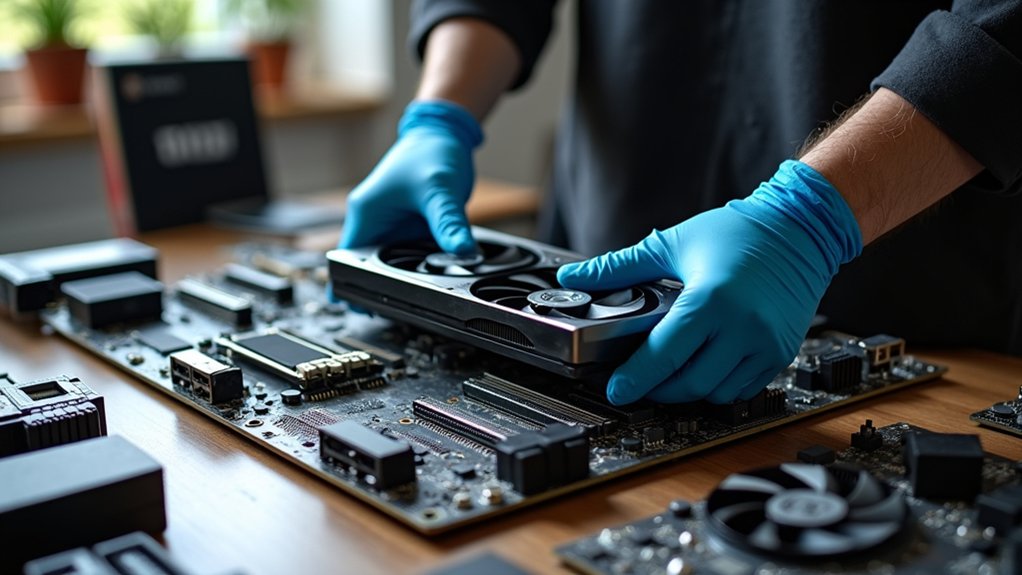
Best video cards and PC specs for 4K gaming
Keen to unlock true 4K gaming performance? Discover which video cards and PC specs deliver stunning visuals—your ultimate setup awaits just ahead.

Upgrading your PC’s graphics? Finding a compatible video card for your motherboard is crucial. It’s not just about snagging the latest video card on the market; you need to consider expansion slots, power supply, and the physical space inside your case. Before investing, let’s break down the steps to ensure your new video card fits perfectly—starting with the basics. By focusing on these key factors, you can avoid headaches and make sure your video card upgrade goes smoothly. Whether you’re a tech enthusiast or a casual user, understanding how to choose the right video card for your motherboard is essential for optimal performance.

When it comes to upgrading your gaming rig or boosting your computer’s graphics performance, knowing how to identify your motherboard’s expansion slots is crucial.
To find the right video card, you’ll first need to open up your computer case and take a close look at those long slots on the motherboard. For a seamless experience, consult your motherboard’s manual or keep an eye out for any labels printed near these slots.
Most modern motherboards come with specific expansion slots, so having this information will save you from purchasing an incompatible video card.
When it comes to upgrading your computer’s performance, knowing the right video card interface type is essential. Most modern systems utilize the PCI Express (PCIe) interface, especially in the x16 slot format, which is the gold standard for video cards today.
However, if you have an older setup, your system might use AGP or even PCI slots. To ensure compatibility, it’s crucial to check your motherboard’s documentation and confirm the supported interface type.
By matching the correct video card interface, you ensure that your new addition will physically fit and communicate seamlessly with your system, thus optimizing your computer’s capabilities.
When selecting a video card, one crucial step is ensuring your power supply can handle it.
First, check your power supply unit’s (PSU) wattage to ensure it meets or surpasses the video card’s power requirements.
It’s important to review the video card’s recommended power specifications and verify that your PSU includes the necessary power connectors, like 6-pin or 8-pin PCIe connectors.
If your PSU falls short, upgrading it might be necessary.
By carefully examining your power supply’s compatibility, you can ensure that your new video card will function smoothly without any power issues.
Before installing a new video card, it’s crucial to ensure it will fit within your PC case.
Start by measuring the length, height, and width of the available space where the video card will be installed. Be mindful of any cables or hardware that could interfere with the video card installation.
Once you have these measurements, compare them to the video card’s dimensions, which are typically found on the manufacturer’s product page or packaging.
Properly verifying physical space in your PC case ensures a smooth video card installation, enhancing your computer’s performance and gaming experience.
When selecting a video card, how do you determine which features align best with your needs? Start by identifying your primary use for your PC—whether it’s gaming, video editing, or general tasks.
Consider crucial aspects such as GPU performance, memory size, number of display outputs, and support for advanced technologies like ray tracing or VR.
It’s essential to prioritize video card features that directly enhance your experience and match your usage patterns. By doing so, you ensure that your video card can handle the demands of your computing activities, whether it’s immersive gaming, detailed video editing, or everyday tasks.
When diving into the world of technology and looking for the perfect video card to enhance your system, checking compatibility is crucial.
Start by visiting your motherboard manufacturer’s website to find their official manufacturer compatibility lists. These lists are invaluable, as they showcase tested and approved video cards for your specific motherboard model.
By cross-checking your chosen video card model against these compatibility lists, you can avoid potential issues and ensure a smooth installation and optimal performance.
Searching for compatible video cards for your motherboard doesn’t have to be daunting. To find the right video card, first identify your motherboard’s expansion slot, ensuring it’s a match. Next, confirm that your power supply can support the new video card, and check that it will fit comfortably within your computer case.
Remember to align the video card’s features with your specific needs and consult manufacturer compatibility lists to avoid any hiccups. By following these straightforward steps, you’ll ensure a seamless installation and enjoy the performance boost that a new video card can bring to your PC. With the right video card, you can elevate your technology experience, whether you’re gaming, editing videos, or exploring new software.

Keen to unlock true 4K gaming performance? Discover which video cards and PC specs deliver stunning visuals—your ultimate setup awaits just ahead.

Curious why gaming graphics cards cost so much? Complex tech and market twists mean there’s more behind the price than you might think.

On the fence about upgrading your gaming laptop's graphics card? Discover what's truly possible before you make your next move.

Considering a hardware upgrade? Check out which PC brands make swapping components a breeze—and discover the standout choice you might not expect.

Discover the top three warning signs your computer may be infected with malware, and see if your device is secretly at risk.

Why does hardware form the backbone of every computer system, impacting everything from speed to security? Discover what makes it truly indispensable.